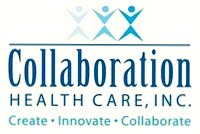
The May/June, 2010 edition of “interactions” includes an interesting article about the way we think about health care. We’ve posted it in our Library at http://www.collaborationhealthcare.com/ and you can grab it here if you want to take a look at it.
The health care industry lives in its own little world. In some ways it is not dissimilar from other industries as it develops its own “culture” and language. Retail, financial services, technology, and many other industries have their own insider cultures, buzzwords, and terminology as well and most of the time they are irrelevant to the individual consumer. But, health care is different. Health care is very personal, very emotional (as we’ve seen), and ultimately touches every individual in one way or another. What is different from most other industries is that every individual interacts with our health care system at some point in their life, sometimes regularly, and many times emotionally.
The recently enacted health care reform legislation sets the framework to try to change the health care culture that has been established over the years. Many health care stakeholders are going to have to look at the system and their role in it very different if they are going to participate in the future. Health care is going to change.
We’re asking consumers to take a different role. We want them to be active participants but the system is really not set up to allow them to do so. The “frames” that exist with the way our health care system is structured today sometimes even prohibits their participation.
In the article “Reframing Health to Embrace Design of Our Own Well-Being,” the authors argue for a need to change the design principles, or frames, that exist in health care today. As we’ve stated repeatedly over the past several years- we need to change the way we look at it.
If we want to really get consumers involved, we need to change the frames that exist today. The authors state, “We debate how to be more efficient and reduce cost rather than radically increase effectiveness and eliminate causes.” A radical change in thinking is going to be required.
Our current system has evolved over the years resulting in what we have today. In the 1900’s the system was focused on monitoring and preventing transferable diseases through immunizations. This part was very successful. Later, the system evolved to focus on eliminating or minimizing acute diseases. It’s been expensive, but it has worked well overall as well.
Now, we’re addressing a population abundant with chronic disease significantly influenced by the culture and lifestyles we lead. The health care focus is now on prevention and wellness. The frame needs to change again. The authors believe well-being and self-management require their own frames. The acute care frame, while still important, cannot address prevention, well-being, and consumer engagement as will be required in the new health care world.
The acute care frame that exists today is trying to accommodate, but it just won’t get there. The article quotes social epidemiologist Leonard Syme who states, “We need to pay attention to the things that people care about, and stop being such experts about our risk factors.” (the acute care frame). We need to get consumers more engaged in a collaborative role in their health and well-being and actively participate when they are healthy as well as when they are sick and need access to the acute care frame. The authors contend, “Health is a means to a goal- one of the things that supports the quality of our everyday life.”
In the self-management and well-being frame health care professionals become coaches and mentors, consumers become the decision-makers and collaborators. Data and information is abundant for the individual to track their progress when setting goals both when they are sick and when they are healthy. And, consumers have simple ways to navigate their options and use health care professionals for advice and insight as well as receiving directions and treatment plans when they are required.
Creating a new well-being/self-management frame will require a total change of the financial structure and payment methods for health professionals. Instead of being paid for services, they are paid for keeping the population healthy.
The traditional “healthcare frame” as we know it today does need to change. We just wonder of the system itself can make the radical changes that will be required to introduce a new frame; one that focuses on the well-being and self-management of the individual consumer.




